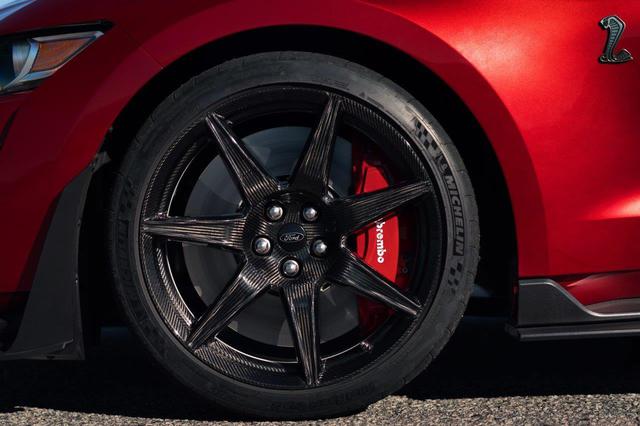GM’s hydrogen fuel cell: Star Trek, moon landing, and electric cars
For many people, hydrogen fuel cells are the way we will power personal cars in the future. No pollution, they operate on the most abundant matter in the universe, and their only real discharge is water. This sounds sci-fi and futuristic, because it is true, but the irony is that although hydrogen fuel cells are definitely the space age, they have been around for half a century-anyway, it is the version of General Motors.
Since 1966
Futuristic Frontier
Invigorating Partnerships, Endless Possibilities
Discovering History
Since 1966
1966 was a pretty interesting year for science geeks; geeks in general really, but in particular, gearhead geeks. The space race was full speed ahead to beat the Soviets to the moon. Batman played by Adam West debuted on TV, and so did this rather obscure show called Star Trek. In the car world, speeds were going up everywhere. The Indy 500 had undergone a complete revolution to “rear”-engined cars (actually mid engine, but the roadster was dead for sure). Grand Prix cars were steadily progressing with regard to both technology and speed, as was sports car racing.
Space age stuff, trickle down technology goodies, had been dripping out of NASA for a while now. Structural plastics were turning up on the road and the track. Electronics were getting smaller, faster, and more robust.
Velcro. Tang. It was your tax dollars at work buddy.
The hydrogen-powered Chevrolet Equinox Fuel Cell vehicle launched in 2007 as part of Project Driveway. They have accumulated more than 3 million miles of real-world driving with a fleet of 119 vehicles. Photo: Steve Fecht for General Motors.
Futuristic Frontier
Also in 1966, with a lot less notice in the mass media, General Motors tested the Electrovan (great name!), the world’s first hydrogen-powered fuel cell vehicle. It might still ring as new and space age today, but GM has had a hand in the technology for quite a while. The project manager of Electrovan fuel cell development was Floyd Wyczalek, who at the ripe, young age of 91, is still going strong.
Floyd fondly remembers the 200-person team working on the Electrovan project. It would turn out to be the first technology transfer of fuel cells from President John F. Kennedy’s 1962 challenge to NASA to “safely land a man on the moon before this decade is out” (say it in a Boston accent).

“We had three shifts of people on this project starting in January 1966,” recalls Wyczalek. “And finishing 10 months later, we had one running demo for the Progress of Power press conference in October that year.”
That is really impressive; in less than a year, GM, Wyczalek, and 200 wrench turning, slide-rule jockeys had a working demo of something that was only seen in a literal spacecraft. Unlike a number of futuristic ideas that got to the demo stage and then languished (MIT’s mag-lev train is a good example), fuel cells in general, and GM’s work with them in particular, have been moving steadily along.
Invigorating Partnerships, Endless Possibilities
GM has invested more than $2.5 billion in the technology and is among the world’s leading patent holders in the field along with Honda, who they have been collaborating with since 2013. GM says its next-generation fuel cell system will be much more powerful but only a fraction of the size of the equipment-crammed Electrovan. That mid-60s vintage project only had room for a driver and two passengers. Let that sink in as you ponder a current full-size GM passenger hauler, like a Tahoe or Suburban.
You don’t have to be a graduate of West Point to realize one of the prime customers for a hydrogen fuel cell could be the military.
“We see broad potential for fuel cell systems in military, aerospace, and other applications while we continue on the path to a commercial vehicle,” said Charlie Freese, Executive Director, GM Global Fuel Cell Business.
General Motors Vice Chairman Steve Girsky (left) and Honda North America President Tetsuo Iwamura (right) announce a long-term, definitive master agreement to co-develop fuel cell systems and hydrogen storage technologies, aiming for a 2020 release. Photo dated Tuesday, July 2nd, 2013 in New York, New York. Photo: General Motors.
Discovering History
But, at its heart, this is not just a tech story, but also an old car story. And like any good old car story, this one ends with a barn find (sort of).
After logging hundreds of hours of testing, both on the road and in load cells back in the 60s, the Electrovan was stored in a Pontiac, Michigan, warehouse for 31 years before being unearthed in 2001. In the early oughts, the vintage Electrovan was used in fuel cell displays and loaned to museums when not at home at the GM Heritage Center.
Since late 2012, Pontiac, Michigan has been home to the GM global hydrogen fuel cell business. I, of course, wonder if the Electrovan is still capable of driving after all these years?
Tony Borroz has spent his entire life around racing antique and sports cars. He means well, even if he has a bias towards lighter, agile cars rather than big engine muscle cars or family sedans.
Photo and amp; Source: General Motors
-
Latest
 James Bond's diving lotus surface, priced at $863,300
James Bond's diving lotus surface, priced at $863,300In the United States, you usually watch a football match on Monday night in September. A few hours before the kick-off of the NFL football game on September 9th, in the evening in London, the second d...
-
Next
 100 to zero: Inside the Brembo brake system of the Ford Mustang Shelby GT500
100 to zero: Inside the Brembo brake system of the Ford Mustang Shelby GT500The 2020 Mustang Shelby GT500 will reach 100 mph in 10.6 seconds. Interestingly, this number is a two-way street. Drive the Shelby GT500 at 100 miles per hour and apply the brakes. You will return to...
